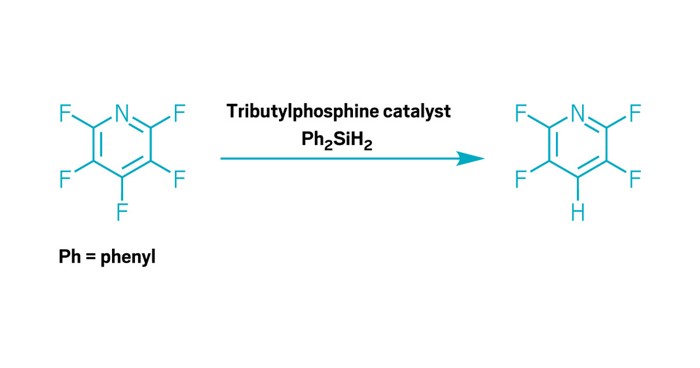Advertisement
Grab your lab coat. Let's get started
Welcome!
Welcome!
Create an account below to get 6 C&EN articles per month, receive newsletters and more - all free.
It seems this is your first time logging in online. Please enter the following information to continue.
As an ACS member you automatically get access to this site. All we need is few more details to create your reading experience.
Not you? Sign in with a different account.
Not you? Sign in with a different account.
ERROR 1
ERROR 1
ERROR 2
ERROR 2
ERROR 2
ERROR 2
ERROR 2
Password and Confirm password must match.
If you have an ACS member number, please enter it here so we can link this account to your membership. (optional)
ERROR 2
ACS values your privacy. By submitting your information, you are gaining access to C&EN and subscribing to our weekly newsletter. We use the information you provide to make your reading experience better, and we will never sell your data to third party members.
Catalysis
Photocatalytic reaction creates cyclopropanes from unactivated alkenes
The oxygen-mediated redox pathway makes carbon triangles without relying on hazardous reagents
by Brianna Barbu
August 4, 2023
Cyclopropanes are a common motif in medicinal chemistry. Three-carbon rings show up in drug structures for conditions including asthma, psoriasis, and COVID-19.

But despite its utility, cyclopropane is not easy to make compared with larger rings. There are a few established chemical methods for coaxing these highly strained molecular triangles into existence, but they require extra prefunctionalization steps or hazardous reagents such as diazo compounds.
Now, a team from Pennsylvania State University led by Ramesh Giri has developed a photocatalytic method for making cyclopropanes by combining alkenes and activated methylene derivatives such as 1,3-dicarbonyl compounds (Science 2023, DOI: 10.1126/science.adg3209). The reaction uses bench-stable reagents and isn’t air-sensitive—in fact, oxygen participates in it as an intermediate oxidant.
Rather than using a carbene or metal carbenoid as the most popular established methods do, this reaction was designed to go through a series of single-electron transfer steps initiated by blue light. “Carbenes are basically two radicals on one carbon. So instead of generating them in one step, we thought we would generate [radicals] stepwise,” Giri says. In addition to the starting materials, photocatalyst, and oxygen, the reaction also requires a catalytic amount of iodine to regenerate the catalyst.
The researchers found that the reaction works with a variety of mono- or disubstituted alkenes—though not dienes or styrene. It also works with multiple combinations of electron-withdrawing groups on methylene. Those groups also provide handles for further functionalization on the cyclopropane ring, which opens up synthetic possibilities that other methods can’t access.
Giri says he and his team are working on expanding the scope of alkenes that can be used and on scaling up the reaction. They also want to explore how to use this catalytic process for other alkene functionalization reactions. Giri also says he’s looking into incorporating the reaction into an undergraduate lab course. “This is how convenient it is. You couldn’t do that with any of the other reactions that you use to make cyclopropanes.”





Join the conversation
Contact the reporter
Submit a Letter to the Editor for publication
Engage with us on Twitter